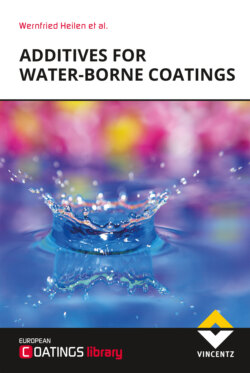Читать книгу Additives for Water-borne Coatings - Wernfried Heilen - Страница 56
На сайте Литреса книга снята с продажи.
3.2.2.1Defoaming by drainage/slow defoaming
ОглавлениеTo cause defoaming a defoamer must be able to penetrate from the inside of a foam lamella to the interface between the liquid and the foam-forming gas. The surfactants stabilising the lamella act as an entry barrier which impedes penetration of the defoamer droplet into the lamella interface. Some defoamers are unable to pass the entry barrier. These so-called slow defoamers only start to act once the foam lamella has been sufficiently thinned by continued drainage. The defoamer droplets (oil droplets) are trapped in the lamellas during this process or migrate to the nodes between the lamellas. If drainage continues, the narrowing lamellas exert a capillary pressure on the defoamer droplets. Once a critical point is reached, the capillary pressure of the upper bubbles in the foam is high enough for the oil droplets to penetrate the surface of the lamella causing its collapse [5] [8] and placing stress on adjacent lamellas. In many cases this stress is sufficient to make the neighbouring lamellas collapse as well. In foams highly thinned by drainage this often leads to a chain reaction until almost complete defoaming occurs. Remaining bubbles are often stable for a long period.
The speed and efficiency of defoaming by drainage is inadequate for many processes in the coatings industry. For this reason, there is a demand for defoamers that provide faster, more efficient defoaming mechanisms [8].
